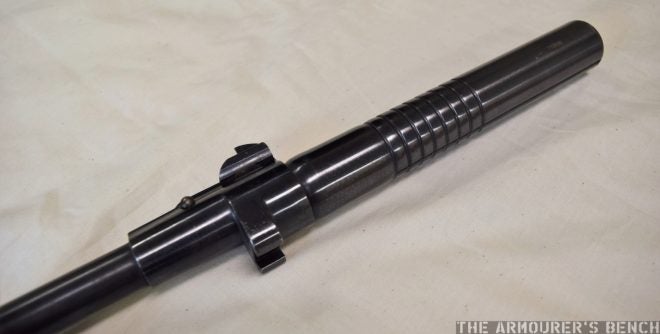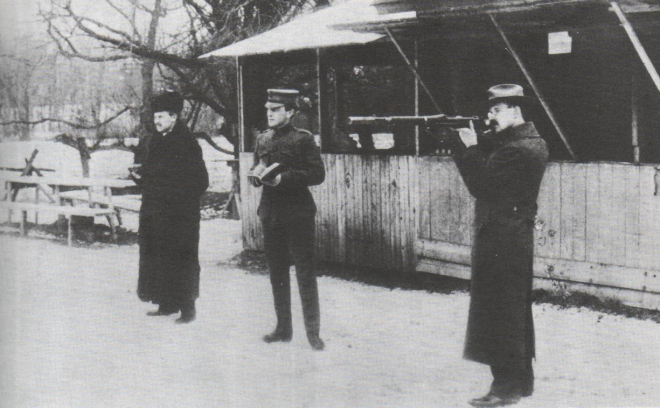In the early 1900s Hiram Percy Maxim, son of the inventor of the Maxim gun, began developing early suppressors which he christened ‘silencers’. It wasn’t long before the US Army took interest in these new silencers and began testing them.
The US Army tested the silencers extensively between 1909 and 1916. In 1910, Colonel S.E. Blunt, Springfield Armory’s commanding officer, reported in January 1909 that the Maxim silencer reduced the M1903’s report at the muzzle and felt recoil by around a third with no loss of accuracy. The initial tests put 400 rounds through one silencer before it failed, the report noted that the silencer could “withstand any rapid fire to which they could be exposed in service under ordinary conditions.”

Maxim Model 1910 Silencer fitted to a Springfield M1903 (Matthew Moss)
While Maxim’s silencers couldn’t mitigate the sound of the .30-06 ammunition’s supersonic crack down range the Army identified an advantage which is only now being reevaluated, silencers aided command and control at the unit level. The School of Musketry reported that:
It greatly facilitated instruction of recruits in rifle firing. It materially lessened the fatigue of the soldier in prolonged firing, such as would occur in modern battle, which is a distinct military advantage.
The muffling of the sound of discharge and the great reduction in the total volume of sound which permits the voice to be heard at the firing point about the sound of a number of rifles in action, greatly facilitate the control of the firing line.
By the time of General Pershing’s expedition into Mexico to hunt down Pancho Villa in 1916, the Army was exploring equipping snipers with silencers and some are reported to have deployed to Mexico. But that leaves us with the all important question – did the US Army use silencers during World War One?
This is the question I attempt to answer in the latest video, from my video project, Armourer’s Bench. At the beginning of the year I had the chance to take a look at a very rare Model 1910 Maxim Silencer fitted to an M1903, held by the Cody Firearms Museum. With the help of some research from the Archival Research Group, we found that the silencers did make it to France with the American Expeditionary Force, but from their things get a little more complicated.

Close up of a Maxim Model 1910 Silencer which fitted onto the M1903 over the front sight, the Model 1910 could also fit a specially adapted bayonet underneath the silencer (Matthew Moss)
In the video below I explain the background history of Maxim and his suppressors, the US army’s extensive testing, President Woodrow Wilson’s concerns about them and look at the Maxim silencer’s role in the war. Check out the full video here:
Research has found that senior officers, including General Pershing, the AEF’s commander, were unenthusiastic about the deployment of silencer to frontline units. So while hundreds of silencers did arrive in France it appears that for the most part they remained in Ordnance stores.
If you’d like to know more you can check out an in-depth blog I wrote to accompany the video, here.
 Your Privacy Choices
Your Privacy Choices
